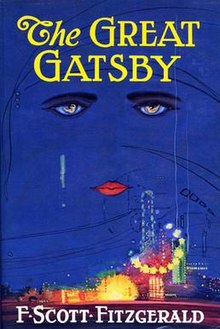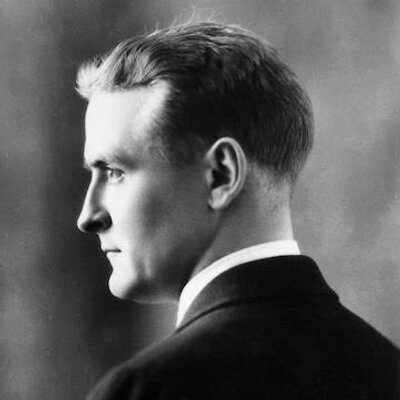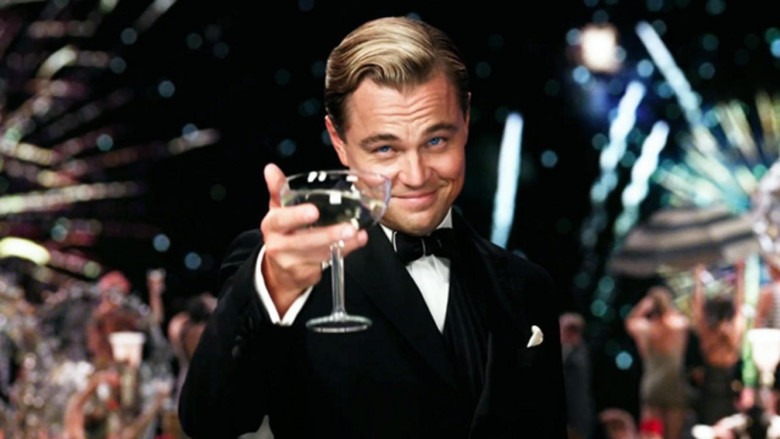The Great Gatsby Summary

9 min read ⌚

“The Great Gatsby” by F. Scott Fitzgerald has everything a book could – and should – have: a good ol’ rags-to-riches story, a lot of romance, even more lies and betrayals, organized crime, parties, murders, attractive golfers and dazzling child-like heiresses, jazz music…
And it’s still as didactic as books get.
Find out in what way. And why you need to read it straight away.
Who Should Read “The Great Gatsby”? And Why?
“The Great Gatsby” is rightfully considered both a literary masterpiece and the “Great American Novel.” Read it to find out more about the nature of the American dream than any newspaper story or news coverage will ever be able to tell you.
F. Scott Fitzgerald Biography
F. Scott Fitzgerald was an American writer, the leading author of the Jazz Age and one of the most prominent members of America’s Lost Generation.
was an American writer, the leading author of the Jazz Age and one of the most prominent members of America’s Lost Generation.
Due to a raucous lifestyle – profoundly intertwined with the nature of Fitzgerald’s wife, the high-spirited socialite Zelda Sayre – he died just a few months after his 44th birthday.
Even so, he managed to write 164 short stories (and publish four short story collections) and four highly praised novels: “This Side of Paradise,” “The Beautiful and Damned,” “The Great Gatsby,” and “Tender Is the Night.”
He is widely regarded as one of the greatest American writers in history.
Plot
It’s the summer of 1922.
Or, as U. S. pop-historians like to say – the Jazz Age.
We would have enjoyed adding a digression or two here, but this takes us straight back to our novel because the term was coined by none other than its author, the great writer and even greater alcoholic, F. Scott Fitzgerald.
Now, the narrator of “The Great Gatsby” is not Gatsby. In fact, the title character doesn’t even appear for about half of the book.
And when he does – boy, what a memorable appearance that is!
But we’ll get to that later.
Now, for the real narrator. It’s a guy named Nick Carraway, a Yale graduate, a First World War veteran, and a bond salesman newbie in New York.
Not an alcoholic as the 2013 film would have you believe (that’s all Fitzgerald). Not even a Tobey Maguire type of guy if we’re being perfectly honest.
But, that’s no excuse for you not to watch the newest adaptation. It was directed by Baz Luhrmann, so expect a lot of flair and extravaganza. And, let’s face it, Leo’s in it, too, so you know you like to watch it.
Also: no other Gatsby adaptation (and there at least five of them) has a better Jordan if you ask us (no, not Michael…).
But – the obligatory preview:
OK – we guess we were incapable of resisting the so-called (by us, of course) “digressions urge.” But, now that we’re over it, we’re ready to get down to business.
As we said above, the novel’s narrator Nick Carraway moves to New York for a job. A fictional character needs a fictional place to live in, so Fitzgerald provides him with one: West Egg, somewhere on Long Island.
There, Nick rents a small house, which looks even humbler when compared to the lavish mansion of his neighbor. And such mansions are not owned by regular Joes such as you and me, so you already know that the guy who owns it is a millionaire.
However, that’s about everything Nick – and, consequently, you – know about the mansion owner for a while. That – and the fact that he holds party after party in his home; for some strange reason, we may add, because he doesn’t even participate in them!
You get zero points for guessing that Nick inadvertently has become Gatsby’s neighbor – whose name, by the way, is undoubtedly not Great, but Jay.
Now that Nick settles, he goes to a dinner at the home of his cousin on the neighboring island East Egg. Unlike West Egg – who is inhabited by the nouveau riche – only old-money inheritors live in East Egg.
And Nick’s cousin is one such person, a member of a wealthy Louisville family.
Her name?
Daisy Fay Buchanan. That second surname is not hers – meaning, she’s married to a college acquaintance of Nick, Tom Buchanan.
Speaking truthfully, her character is not hers either, because if literature were non-fiction, then Daisy Fay would have probably been named Ginevra King, one of Fitzgerald’s two muses. Interestingly enough, “The Great Gatsby” is dedicated to the other: his wife, Zelda.
Well, much more than Fitzgerald, Tom Buchanan is not precisely a one-girl type-of-fellow, and Nick learns soon enough that he has a mistress, Myrtle Wilson.
And who does he learn this from?
Jordan Baker, an attractive young golfer, and the final character of Great Gatsby’s Big Four. Interesting trivia: that’s how Ginevra King’s group of Chicago debutants was called back when Fitzgerald was writing the novel.
Some time passes, and a surprised Nick gets an invitation to a Gatsby party. There, he encounters Jordan and together, they meet Gatsby himself.
He has tanned skin and somewhat short hair. Also, a smile so enchanting it generates one of the most famous descriptions of a smile in this or any other book in history. Because it is
one of those rare smiles with a quality of eternal reassurance in it, that you may come across four or five times in life. It faced – or seemed to face – the whole external world for an instant, and then concentrated on you with an irresistible prejudice in your favor. It understood you just so far as you wanted to be understood, believed in you as you would like to believe in yourself and assured you that it had precisely the impression of you that, at your best, you hoped to convey. Precisely at that point it vanished – and I was looking at an elegant young rough-neck, a year or two over thirty, whose elaborate formality of speech just missed being absurd.
Can’t picture it?
Well, this is how Gatsby’s first appearance looks on the screen, via a Buzz Luhrmann lavish set in the back and Leo di Caprio’s acting skills in the fore.

Now that you’ve met Jay Gatsby, it’s time you hear out his biggest secret. It’s got a lot to do with the invitation Nick has received and the fact that Gatsby wanted to meet him in the first place.
Because, as Jordan tells Nick, back in 1917, Gatsby met Daisy Fay, then a young war volunteer and quite an enchanting maiden. So much so, in fact, that Gatsby fell profoundly in love with her.
Five years later, he’s organizing parties in West Egg to attract her attention, hoping that one day she’ll appear at his doorstep and see him for the man he has become.
And if we really need to use one word to describe what kind of man are we talking about, be prepared for a strange one: a millionaire.
You see, Jay Gatsby wasn’t always Jay Gatsby.
Quite literally!
He was Jimmy Gatz, a poor fellow living on a rural farm in North Dakota. And as we learn from his old man in the last chapter of the book, he was also “bound to get ahead.”
And he was ready to use some serious Ben Franklin methods to do that!
Just take a look at his schedule:
On the last fly-leaf was printed the word SCHEDULE, and the date September 12th, 1906. And underneath:
Rise from bed……………. 6.00 A.M.
Dumbbell exercise and wall-scaling…… 6.15-6.30
Study electricity, etc………… 7.15-8.15
Work………………… 8.30-4.30 P.M.
Baseball and sports…………. 4.30-5.00
Practice elocution, poise and how to attain it 5.00-6.00
Study needed inventions……….. 7.00-9.00 “GENERAL RESOLVES
No wasting time at Shafters or [a name, indecipherable]
No more smokeing or chewing
Bath every other day
Read one improving book or magazine per week
Save $5.00 [crossed out] $3.00 per week
Be better to parents
If you notice the way “smokeing” is spelled, you’re bound to realize that the Jimmy Gatz from 1906 was not even remotely similar to the Jay Gatsby of 1922.
What changed him wasn’t only the strict adherence to the plan – but also a meeting with Dan Cody, a copper tycoon, when Jimmy was merely 17 years old. That’s when Jimmy changed his name and learned from Cody “the ways of the rich.”
To put that into plain words:
Jimmy Gatz reinvented himself from scratch to become Jay Gatsby.
Or, to put it into Nick’s – that is, Fitzgerald’s – much more eloquent phrases:
The truth was that Jay Gatsby, of West Egg, Long Island, sprang from his Platonic conception of himself. He was a son of God–a phrase which, if it means anything, means just that – and he must be about His Father’s Business, the service of a vast, vulgar and meretricious beauty. So he invented just the sort of Jay Gatsby that a seventeen-year-old boy would be likely to invent, and to this conception he was faithful to the end.
Which is where we are getting.
You see, Gatsby and Nick become friends after the party. Gatsby uses the opportunity to arrange a meeting between him and Daisy.
Nick does exactly that: he invites Daisy over to his house, not telling her that Gatsby will be there as well.
You know what happens next: a bit of awkwardness at first, and then sparks all over the place. Or, to use the lyrics of a “Grease” song: “summer heat, boy and girl meet/ but, uh oh, those summer nights…”
Hey, we forgot to tell you two things!
First of all, the sparks aren’t new: back in 1917, when Jay and Daisy Fay first met, the feelings between them were supposedly mutual. In fact, Daisy even promised to wait for Jay. That is until she sent him a letter stating that she’ll marry Tom Buchanan instead.
Which brings us to the second thing: Daisy Fay Buchanan has a three-year-old daughter with her husband. And much like her (her name is Pammy) and Gatsby himself – she’s more of a child than an adult woman once you get to know her.
Not really a happy-ending material, ha?
The Great Gatsby Epilogue
Naturally, things start to go awry when Tom finds out about the affair.
Not exactly subtle in his hypocrisy – remember Myrtle, Tom? – the guy goes off his rocker.
And all this culminates at the Plaza Hotel, where, during a casual discussion, he first confronts Gatsby who reveals to him that he and Daisy have a history together and then tells Daisy that Gatsby is a criminal.
Which, by the way, he probably is, since the book heavily implies that he has made his fortune bootlegging alcohol during the Prohibition.
Gatsby, however, insists that Daisy always loved him and that she married Tom solely for the money. However, to his surprise, Daisy claims that she loved them both.
The confrontation ends with Daisy and Gatsby hopping in Gatsby’s yellow Rolls Royce, and Tom, Jordan, and Nick leaving with Tom’s car.
A few minutes later, the Rolls Royce strikes a woman standing in the middle of the road, killing her instantly.
Now, in Gatsby’s case, fiction is stranger than truth:
Out of all people in the world, the woman turns out to be none other than Myrtle, Tom’s lover.
The Rolls Royce drives away, and the next car to arrive at the place is – of course – Tom’s. Already juggling with some doubts over Myrtle’s fidelity, her husband George wrongly puts two and two together and supposes that the guy with the Rolls Royce had been her lover.
Tom is not really a guy who would think twice before saving his own skin, so he tells George where he can find Gatsby.
And there, still dreamy-eyed and idealistic, Gatsby tells Nick that it was Daisy who had been driving the car but that, nevertheless, he will be the one taking the blame.
He won’t even have a proper chance to do that: George arrives at his mansion, killing him first and committing suicide afterward.
Nick stages a funeral for Gatsby.
Basically nobody comes.
The book ends with Nick leaving West Egg and thinking one last time about Gatsby and the futility of the American Dream, symbolized by the green light of Daisy’s home Gatsby was able to see from his mansion.
There are not many paragraphs more famous in American literature than this one, so we’ll quote it in full:
Gatsby believed in the green light, the orgastic future that year by year recedes before us. It eluded us then, but that’s no matter — to-morrow we will run faster, stretch out our arms farther… And one fine morning ——
So we beat on, boats against the current, borne back ceaselessly into the past.
God, we love that ending!
Like this summary? We’d like to invite you to download our free 12 min app, for more amazing summaries and audiobooks.
“The Great Gatsby PDF Quotes”
My father gave me some advice that I've been turning over in my mind ever since. ‘Whenever you feel like criticizing any one,’ he told me, ‘just remember that all the people in this world haven't had the advantages that you've had.’ Share on X I hope she'll be a fool – that's the best thing a girl can be in this world, a beautiful little fool. Share on X And I like large parties. They’re so intimate. At small parties there isn’t any privacy. Share on X And so with the sunshine and the great bursts of leaves growing on the trees, just as things grow in fast movies, I had that familiar conviction that life was beginning over again with the summer. Share on X So we beat on, boats against the current, borne back ceaselessly into the past. Share on XOur Critical Review
You’ll like very few books if you don’t like this one. It’s a classic – but it isn’t at all as boring as the word suggests. And it isn’t even long as you would expect from a classic!
What it is – is romantic, tragic, beautiful, touching, compelling, glitzy.
And as memorable as books get.








